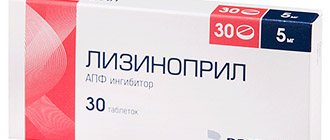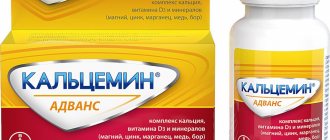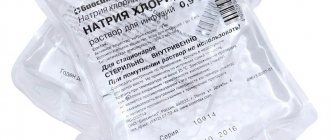The human body at any age contains about 1200 mg of calcium. It is mainly found in the teeth and skeletal system. Present in small quantities in urine, blood and saliva. With frequent physical activity and during pregnancy, the body needs more calcium. To compensate for its deficiency, experts often prescribe Calcium D3 Nycomed.
Symptoms of mineral deficiency
Calcium deficiency can be determined by the following signs:
- pain in the bones, which is explained by weight loss and thinning of the bones;
- deterioration of hair condition (dull, brittle);
- problematic skin of the face and body;
- pronounced toxicosis in pregnant girls;
- weakened immune system;
- formation of tartar and caries;
- the appearance of fungus on the nails.
The drug Calcium D3 Nycomed will help compensate for the lack of the mineral.
Who are calcium supplements indicated for?
- In the treatment of pathological fractures due to osteoporosis
- Women over 50 years of age with vitamin D deficiency or deficiency
- If you have osteoporosis
- For women who have reached menopause to prevent osteoporosis
- If you have insufficient calcium intake from food:
The daily requirement for calcium in children under 3 years of age is 700 mg, for children 4-10 years of age and adults 1000 mg. An increased requirement of up to 1200 mg is observed in women in menopause or over 50 years of age and in men over 70 years of age. Adolescents during the growing period (10-16 years), pregnant and breastfeeding women should receive up to 1300 mg of calcium.
Signs of excess calcium
Excess calcium can be associated with taking medications, as well as as a result of the appearance of malignant or benign neoplasms. This can be determined by the following signs:
- confused mind, problems with coordination;
- gag reflex after eating;
- stomach upset;
- increased weakness;
- problems with the heart and blood vessels;
- kidney diseases.
Contraindications and adverse reactions
After taking Calcium D3 Nycomed, undesirable reactions may occur:
- from the gastrointestinal tract: upset stomach, vomiting, nausea;
- from the central nervous system: nervousness, increased feeling of agitation;
- from the metabolic side: hypercalcemia, manifested by fatigue, problems with the heart and blood vessels;
- on the skin: an allergic reaction manifested by various rashes.
The drug is strictly contraindicated in the following cases:
- excess calcium in the blood;
- chronic renal failure;
- active tuberculosis;
- allergy to the substances included in the composition, including fructose.
Calcium Complivit D3 for babies: instructions for use
Registration number:
Trade name of the drug : Complivit® Calcium D3 for babies
International non-proprietary or generic name: Calcium carbonate + Colecalciferol &.
Dosage form: powder for the preparation of suspension for oral administration.
Composition per 43.0 g of powder:
Active ingredients: calcium carbonate (in terms of calcium) – 4.0 g; colecalciferol (in terms of 100% colecalciferol) - 0.027 mg (1000 IU), in the form of a granulate containing: cholecalciferol, d,l-alpha-tocopherol, triglycerides with medium-length fatty acid residues, sucrose, acacia gum, corn starch, calcium phosphate, water. Excipients: sorbitol (sorbitol), pregelatinized starch (pregel), colloidal silicon dioxide (aerosil), orange flavor.
Composition per 5 ml suspension:
Active ingredients : calcium carbonate (in terms of calcium) - 200 mg/5 ml; colecalciferol (in terms of 100% colecalciferol) - 0.00135 mg (50 IU)/5 ml, in the form of a granulate containing: cholecalciferol, d,l-alpha-tocopherol, triglycerides with medium-length fatty acid residues, sucrose, acacia gum , corn starch, calcium phosphate, water. Excipients: sorbitol (sorbitol), pregelatinized starch (pregel), colloidal silicon dioxide (aerosil), orange flavor.
Description
white or almost white powder with a characteristic odor of orange.
Description of the prepared suspension : a homogeneous suspension of white or almost white color with a characteristic odor of orange.
Pharmacotherapeutic group: calcium-phosphorus metabolism regulator
ATX code : [A12AX]
Pharmacological properties
A combined drug designed to compensate for the deficiency of calcium and vitamin D3 in the body.
Pharmacodynamics . Calcium is involved in the formation of bone tissue, increases its density, participates in the mineralization of teeth, in the regulation of nerve conduction and muscle contractions, in maintaining the stability of cardiac activity, and in the process of blood clotting.
Vitamin D3 (colecalciferol) regulates the exchange of calcium and phosphorus in the body, increases the absorption of calcium in the intestines, promotes bone mineralization, the formation of the bone skeleton and teeth in children.
The drug reduces the production of parathyroid hormone, which is a stimulator of increased bone resorption.
Indications for use
Prevention of calcium and vitamin D3 deficiency in young children.
Contraindications
Hypersensitivity, hypercalcemia, hypercalciuria, calcium nephrourolithiasis, hypervitaminosis D, decalcifying tumors (myeloma, bone metastases, sarcoidosis), osteoporosis due to immobilization, active form of pulmonary tuberculosis; sucrase/isomaltase deficiency, fructose intolerance, glucose-galactose malabsorption.
Carefully
Renal failure, benign granulomatosis, taking cardiac glycosides and thiazide diuretics.
Directions for use and doses
The drug is taken orally with meals. The dosage form is specially designed for young children under 3 years of age.
Preparation of a suspension from powder: Add boiled and cooled water to the bottle containing the powder.
2/3 of the bottle volume, mix thoroughly (for 1-2 minutes). Add boiled and cooled water to a volume of 100 ml (up to the neck of the bottle) and mix again. Shake the contents of the bottle before each dose.
5 ml of the resulting suspension contains calcium carbonate in terms of elemental calcium - 200 mg, colecalciferol - 50 IU.
Children over 1 year of age – 5-10 ml once a day; children under 1 year - 5 ml of suspension 1 time per day, as recommended by a doctor. The drug is prescribed to other age groups if necessary in appropriate doses on the recommendation of a doctor.
The duration of the prophylaxis course is 1 month, a longer course is prescribed by a doctor.
Side effect
Allergic reactions. When using the drug in recommended doses, no other side effects were identified. If recommended doses are exceeded or other drugs containing calcium are taken simultaneously, hypercalcemia and hypercalciuria (increased calcium levels in the blood and urine) may develop.
Possible side effects of vitamin D3 also include: decreased appetite, polyuria, constipation, headache, myalgia, arthralgia, increased blood pressure, arrhythmias, impaired renal function, exacerbation of the tuberculosis process in the lungs.
Possible side effects of calcium carbonate also include: gastralgia, constipation or diarrhea, flatulence, nausea, secondary increased gastric secretion.
Overdose
Symptoms: thirst, polyuria, loss of appetite, nausea, vomiting, constipation, dizziness, weakness, headache, fainting, coma; with long-term use, calcification of blood vessels and tissues. Laboratory indicators in case of overdose: hypercalciuria, hypercalcemia. Treatment: stop taking the drug, consult a doctor, restricted diet
calcium, rehydration, diuretics, glucocorticosteroids, in severe cases - hemodialysis.
Interaction with other drugs
Calcium and vitamin D3 preparations reduce the absorption of bisphosphonates, digoxin, iron supplements and tetracycline antibiotics (an interval between doses of at least 2-3 hours is required).
It is possible to enhance the effect of cardiac glycosides (with simultaneous use, monitoring of the ECG and the patient’s condition is necessary).
Phenytoin, barbiturates, and primidone reduce the effect of vitamin D3 by enhancing its metabolism.
Vitamin A, tocopherol, ascorbic acid, pantothenic acid, thiamine, riboflavin weaken the toxic effect of vitamin D3.
Glucocorticosteroids reduce the absorption of calcium ions in the intestine.
Cholestyramine, colestipol and mineral oils reduce the absorption of vitamin D3 and require an increase in its dosage.
Thiazide diuretics increase the risk of hypercalcemia.
Vitamin D increases the absorption of phosphorus-containing drugs and the risk of hyperphosphatemia. When used simultaneously with sodium fluoride, the interval between doses should be at least 2 hours; with oral forms of tetracyclines - at least 3 hours.
Long-term therapy with vitamin D3 against the background of simultaneous use of Al3+ and Mg2+-containing antacids increases their concentration in the blood and the risk of intoxication (especially in the presence of chronic renal failure).
Concomitant use with other vitamin D analogues and calcium preparations increases the risk of developing hypervitaminosis D.
special instructions
To avoid overdose, do not use simultaneously with vitamin complexes containing calcium and vitamin D3.
When using vitamin D3 prophylactically, it is necessary to keep in mind the possibility of overdose, especially in children (you should not prescribe more than 10-15 mg per year). Long-term use in high doses leads to chronic hypervitaminosis D3. With long-term treatment, it is necessary to monitor the concentration of Ca2+ in the blood and urine (especially when combined with thiazide diuretics).
It should be borne in mind that sensitivity to vitamin D varies from patient to patient, and in some patients taking even therapeutic doses can cause symptoms of hypervitaminosis.
The sensitivity of newborns to vitamin D varies, some may be sensitive even to very low doses, so prophylaxis should be carried out under the supervision of a physician.
Breastfed newborns, especially those born to mothers with dark skin and/or insufficient sun exposure, are at high risk of developing vitamin D deficiency.
Release form
Powder for the preparation of suspension for oral administration 200 mg + 50 IU/5 ml.
43.0 g in 100 ml bottles of dark (amber) glass. One bottle, along with instructions for use and a measuring spoon, is placed in a cardboard pack.
Storage conditions
Store in a place protected from light, at a temperature not exceeding 25 °C.
Store the prepared suspension in a place protected from light, at a temperature not exceeding 15 ºС (in the refrigerator). Do not freeze.
Keep out of the reach of children.
Best before date
Powder for preparation of suspension for oral administration should be stored for 2 years. Store the prepared suspension for no more than 20 days. Do not use after the expiration date stated on the package.
Conditions for dispensing from pharmacies
Over the counter
Name and address of the manufacturer/organization receiving claims:
OJSC "Pharmstandard - Leksredstva", 305022, Russia, Kursk, st. 2nd Aggregatnaya, 1a/18 Tel./fax, www.pharmstd.ru
Representative
OJSC Pharmstandard-Leksredstva
Is it possible to drink Calcium D3 Nycomed while breastfeeding?
Calcium D3 Nycomed is also allowed to be taken during lactation. The active substances pass into breast milk. That is why it is important to correctly consider other sources of mineral and vitamin D. When treating with this medication, it is worth familiarizing yourself with the situations in which excess calcium may develop. This will prevent a similar situation in the mother and her baby.
With proper calcium intake, the baby develops a strong skeletal system, the likelihood of fractures decreases, and girls grow beautiful hair and strong nails.
special instructions
Based on reviews of the drug, we can conclude that after taking it in the morning on an empty stomach, nausea and sometimes pain in the stomach may appear. This effect occurs due to the presence of cholecalciferol in the composition. This component provokes pain and cramps in patients prone to gastrointestinal diseases. Therefore, it is best to take the tablets after meals.
You should not take Calcium D3 Nycomed in parallel with alcohol, black tea and coffee drinks. The most harmless thing that can happen is that the substances are not absorbed; in the worst case, intoxication will occur.
When taken with alcohol, nausea and vomiting often occur. This is the body's reaction to the presence of incompatible substances.
The drug can be taken during pregnancy and lactation. If a pregnant woman takes Calcium, her baby will be born strong and healthy. The active substances are also able to pass into breast milk.
Drug interactions
If you take the medication with other medications to treat problems with the heart and blood vessels, toxic effects on the cardiovascular system and liver may develop. In the case of simultaneous use of Calcium D3 Nycomed and antibiotics, there may be a deterioration in the absorption of the latter.
When taken simultaneously with multivitamin complexes, excess calcium in the blood may appear, and the functioning of the entire body may deteriorate.
If there is an urgent need to take these drugs together, you should consult a specialist in advance.









